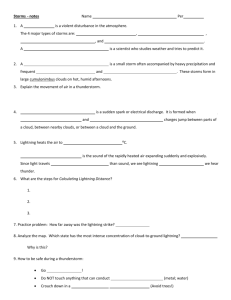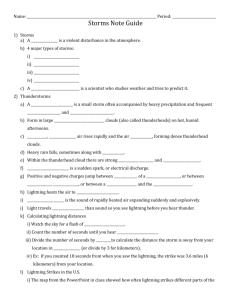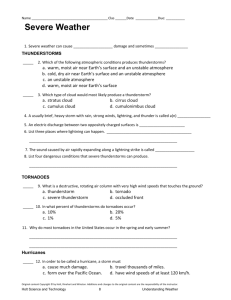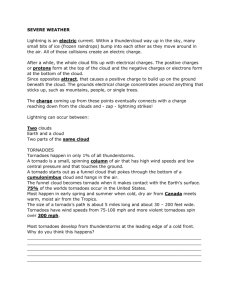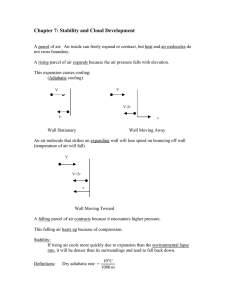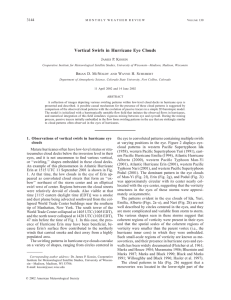Final Exam study guide - Department of Earth System Science
advertisement
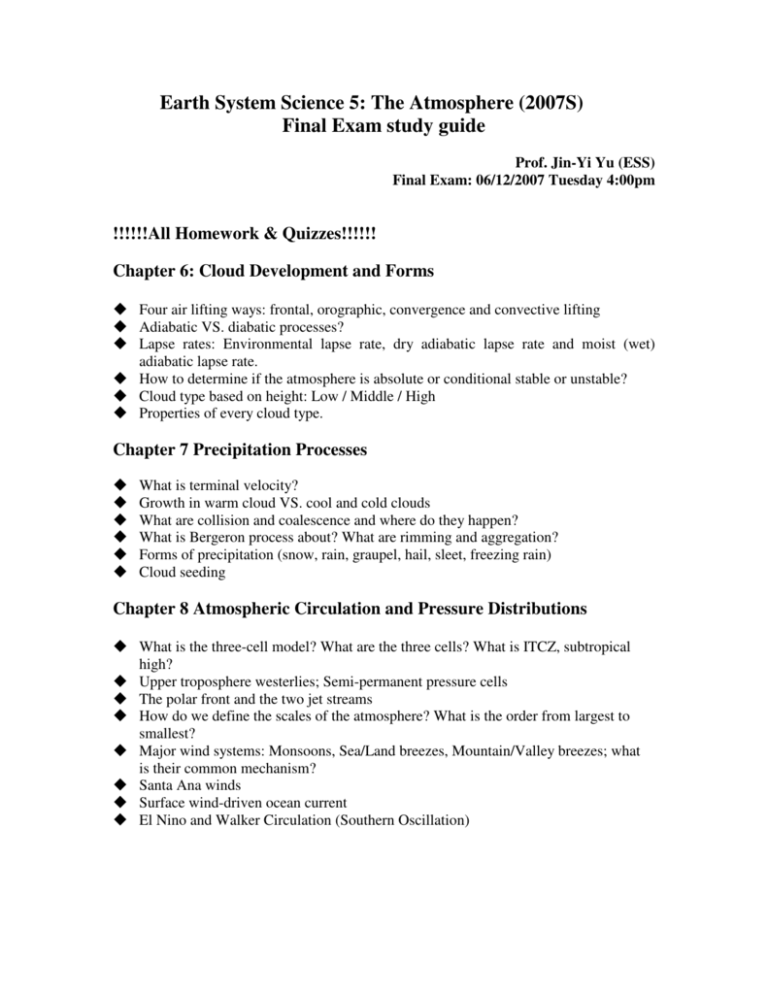
Earth System Science 5: The Atmosphere (2007S) Final Exam study guide Prof. Jin-Yi Yu (ESS) Final Exam: 06/12/2007 Tuesday 4:00pm !!!!!!All Homework & Quizzes!!!!!! Chapter 6: Cloud Development and Forms Four air lifting ways: frontal, orographic, convergence and convective lifting Adiabatic VS. diabatic processes? Lapse rates: Environmental lapse rate, dry adiabatic lapse rate and moist (wet) adiabatic lapse rate. How to determine if the atmosphere is absolute or conditional stable or unstable? Cloud type based on height: Low / Middle / High Properties of every cloud type. Chapter 7 Precipitation Processes What is terminal velocity? Growth in warm cloud VS. cool and cold clouds What are collision and coalescence and where do they happen? What is Bergeron process about? What are rimming and aggregation? Forms of precipitation (snow, rain, graupel, hail, sleet, freezing rain) Cloud seeding Chapter 8 Atmospheric Circulation and Pressure Distributions What is the three-cell model? What are the three cells? What is ITCZ, subtropical high? Upper troposphere westerlies; Semi-permanent pressure cells The polar front and the two jet streams How do we define the scales of the atmosphere? What is the order from largest to smallest? Major wind systems: Monsoons, Sea/Land breezes, Mountain/Valley breezes; what is their common mechanism? Santa Ana winds Surface wind-driven ocean current El Nino and Walker Circulation (Southern Oscillation) Chapter 9 Air Masses and Fronts What are the classifications of air masses? How many air masses? Where are the source regions (map)? What are the two characteristics of certain air mass? Four kinds of front systems: cold front, warm front, stationary front and occluded front. And cloud types above the warm front VS. the cold front. Arctic front vs. polar front Chapter 10 Mid-latitude Cyclones The characteristics of mid-latitude cyclones The life cycle (3 stages) of a mid-latitude cyclone Earth (planetary) vorticity, relative vorticity and absolute vorticity Anticyclones Chapter 11 Lightning, Thunder, and Tornadoes Processes of lightning formation cloud-to-cloud (sheet lightning) and cloud-to-ground lightning What is a thunderstorm? Two types of thunderstorms Air mass thunderstorm three stages Mesoscale Convective Systems (MCS) ; Mesoscale Convective Complexes (MCC)? Downbursts and Microbursts Tornadoes; The location and timing of tornadoes in U.S. The Fujita scale Chapter 12 Tropical Storms and Hurricanes Naming of Hurricane / Typhoon / Cyclone, Annual hurricane frequency Hurricane characteristics, formations, energy and hurricane season Basic structures of hurricane Chapter 16 Climate Change: Past and Future Lecture notes Temperature changes in the past 20th century Ocean VS. land temperature changes; vertical distribution of temperature changes Projected precipitation/hurricane activity changes in the future
